The arena was small and dimly lit. In one corner of arena was an altar lit by ‘diyas’, the light reflecting off the steel swords and shields lying all around. Up above the ring, surrounding it from all sides sat the onlookers, unsure of what to expect but clearly visibly excited. We were about to witness a demonstration of the ancient Martial arts form of ‘Kalaripayattu‘.
Kalaripayattu originated in South India (modern day Tamil Nadu and Kerala) and gained prominence as a form of martial training for warriors of the Chera and Chola kingdoms. It combined hand to hand and weaponised combat with the graceful movements of the dance forms of the South, to create a martial art style that was at once beautiful and deadly. Legend has it that it was developed by the Brahmin warrior Parasurama, an avatar of Vishnu; and it is said that Lord Rama used the knowledge of the weapons of Kalaripayattu gained from the Sage Agastya to defeat Ravana. It is believed that Kalaripayattu is at the roots of the very practice of martial arts and that many forms were born from it.
And what a sight it was! The warriors, men and women, in pairs and trios, burst forth onto the arena with a grace and energy we had not seen before. They flew, they danced, they cartwheeled and summersaulted, as steel clashed against steel and sparks lit up the air around them. It was exhilarating stuff and by the end of it, as the warriors stood in a row, sweat pouring down their faces, it seemed as if the audience finally let out a collective breadth.
Whilst there are Kalaripayattu schools all over Kerala, we attended the demonstration by the Punarjani School in Munnar, where we also had the opportunity to photograph the Kathakali dancers as they prepared for their performance.

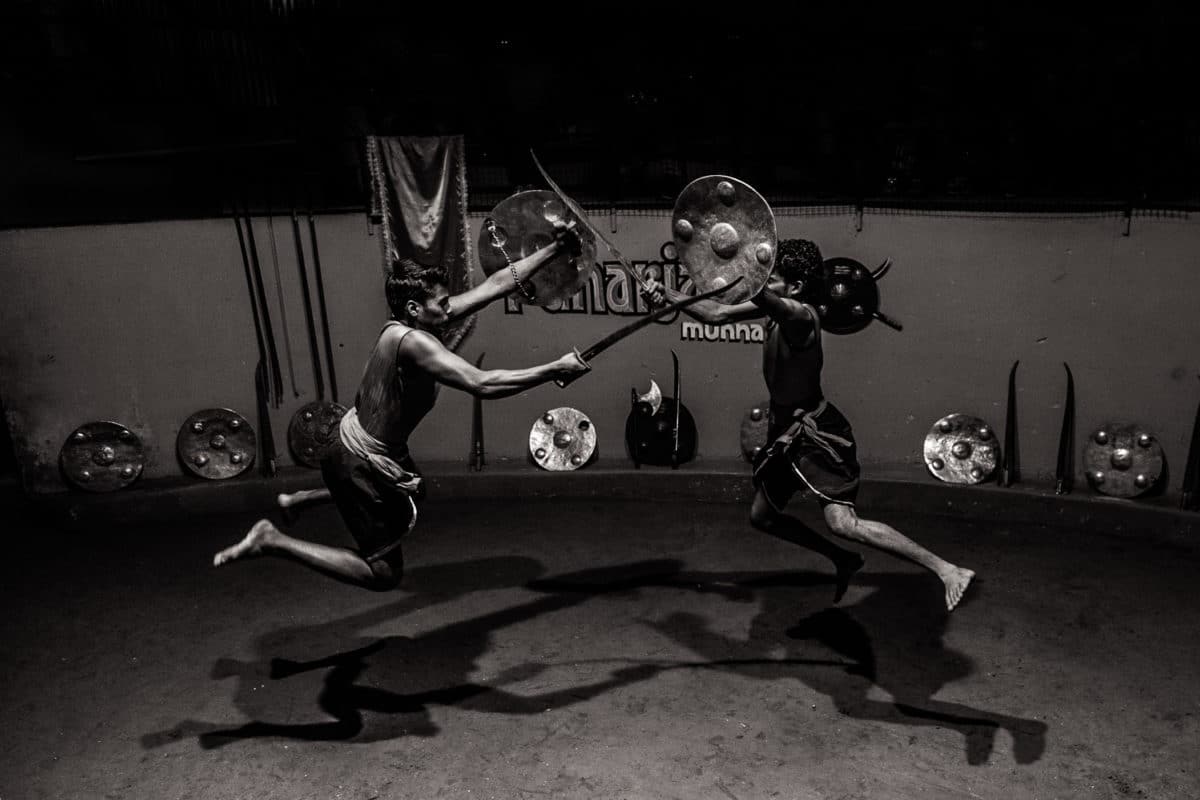

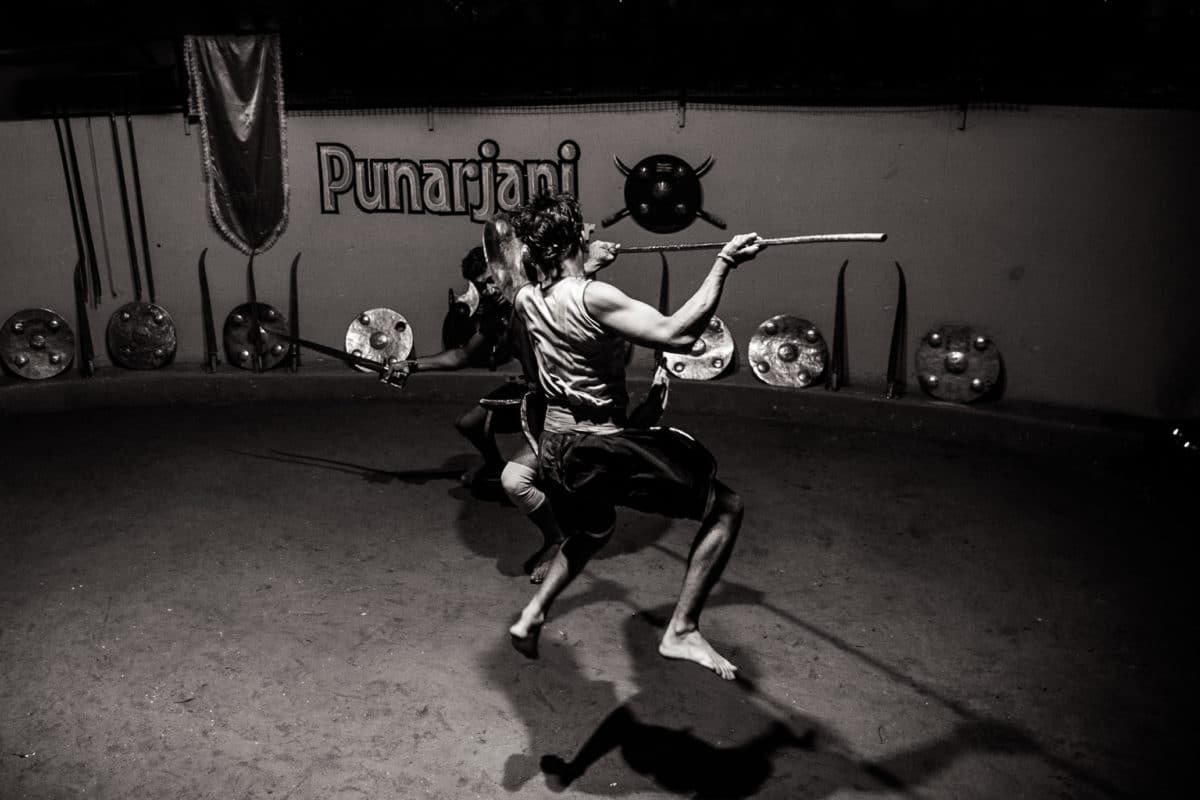
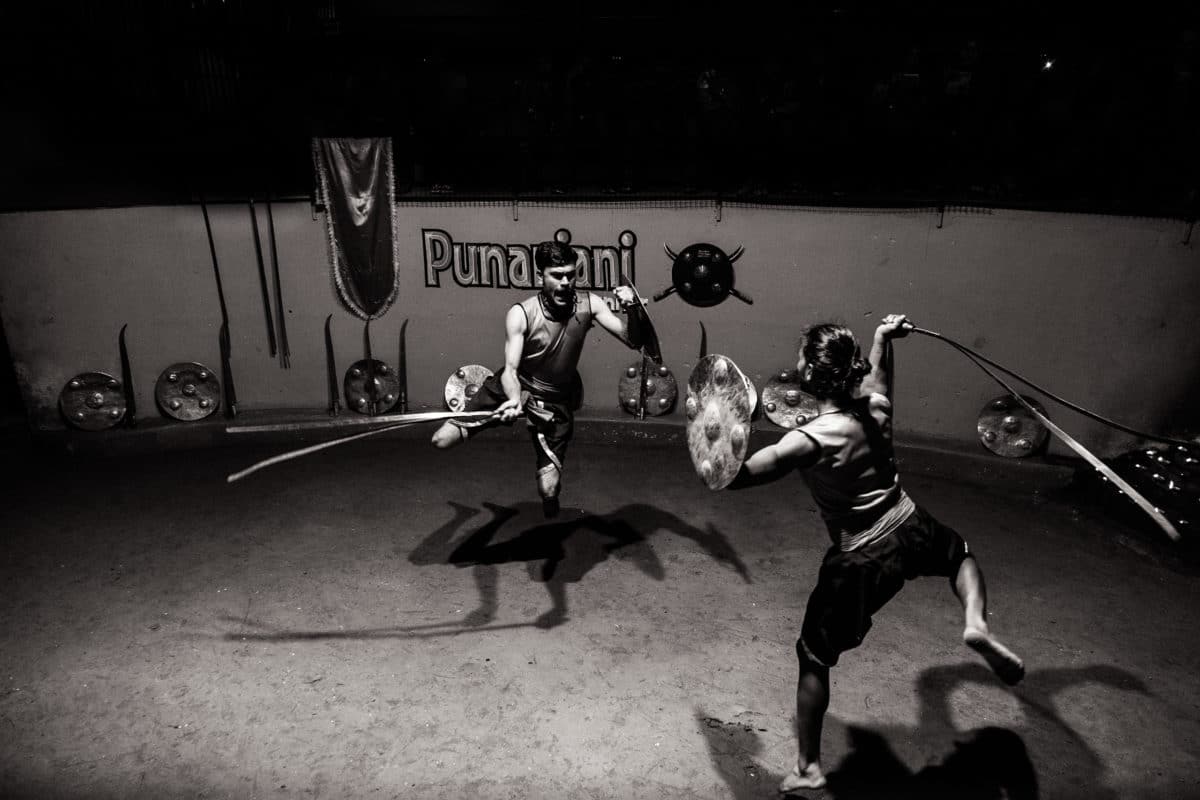

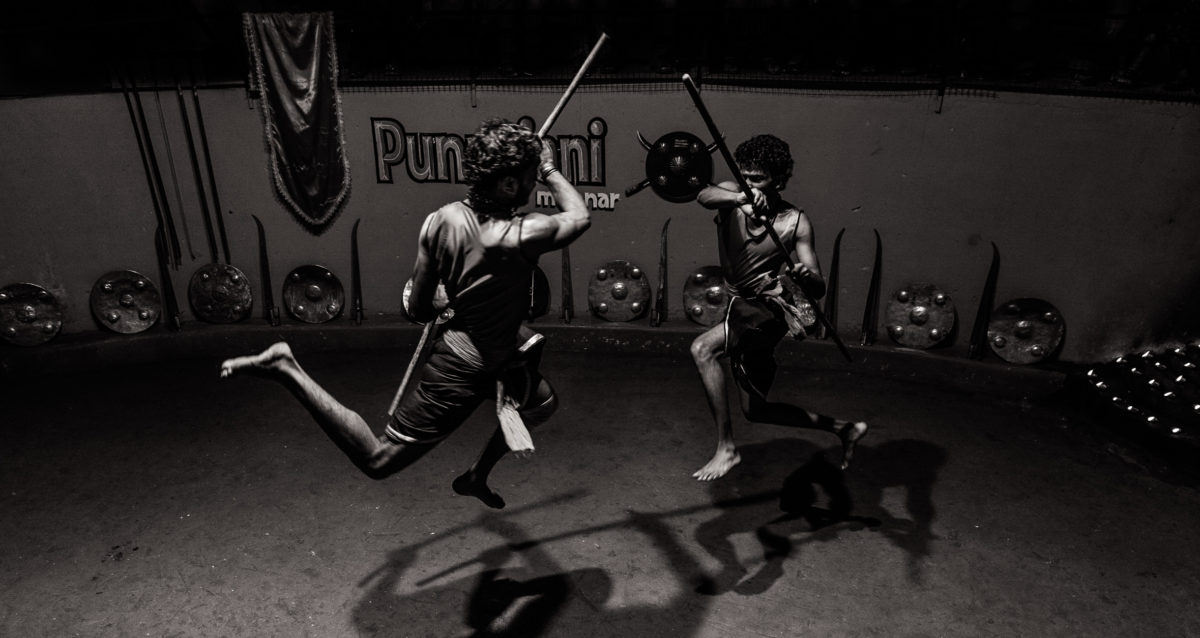
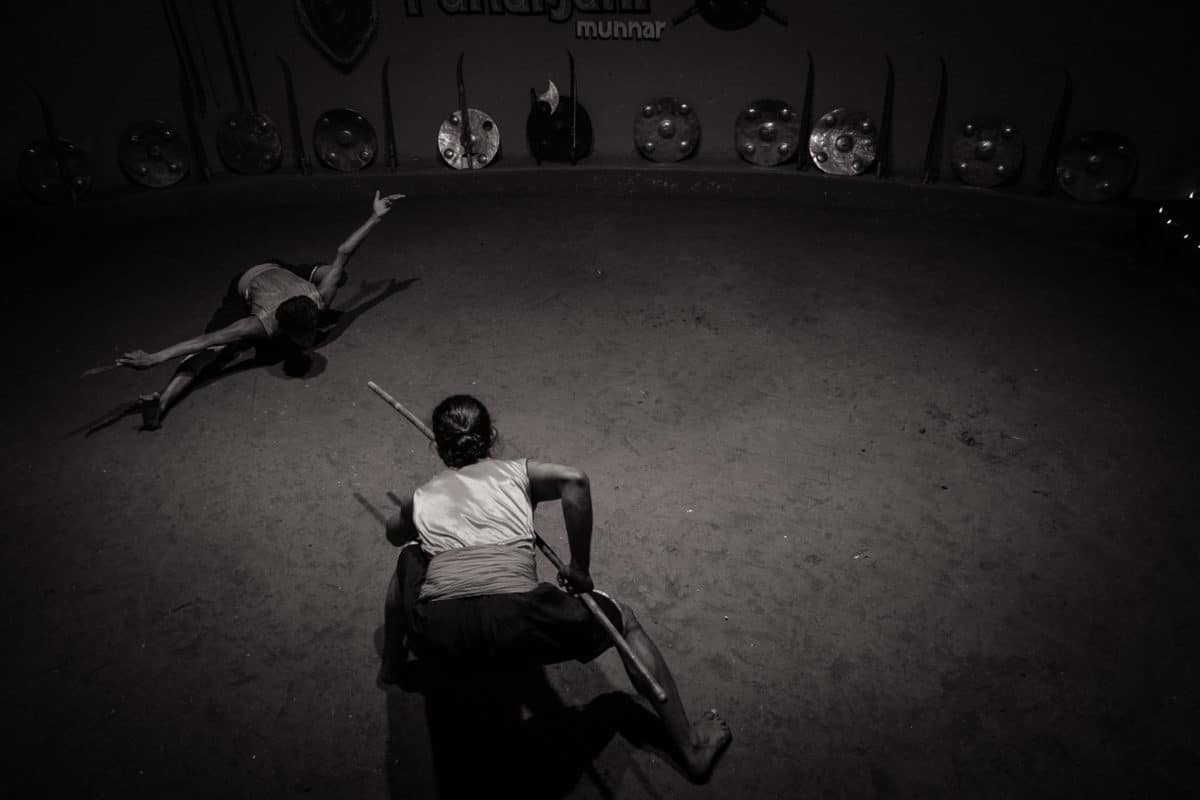
Excellent!
Thank you!